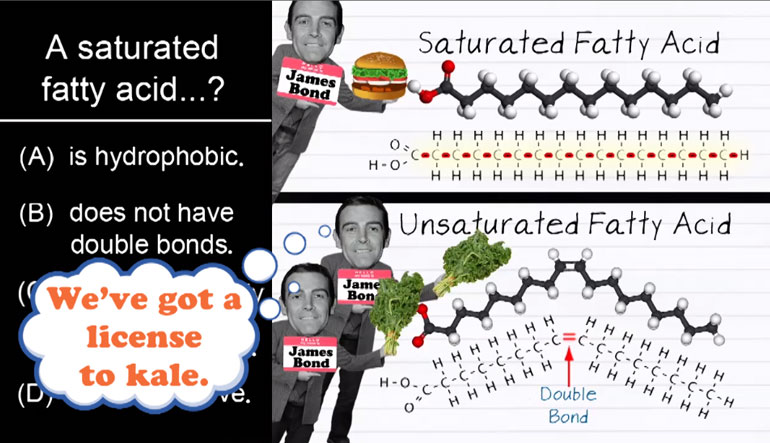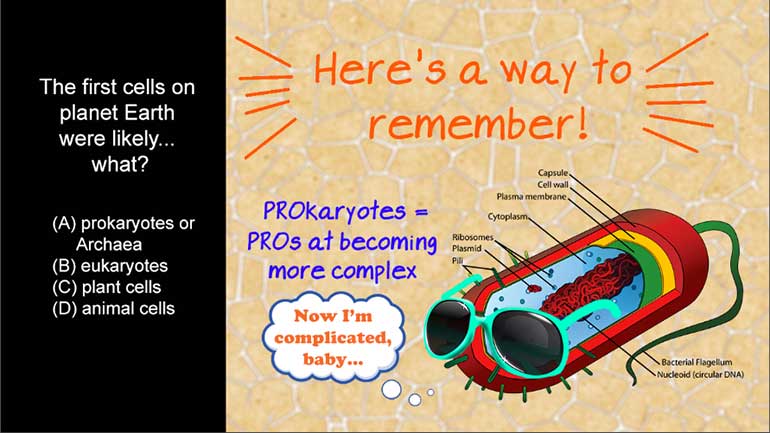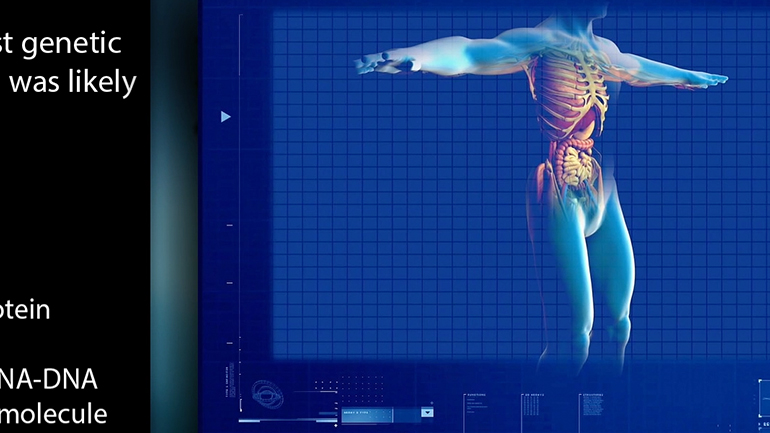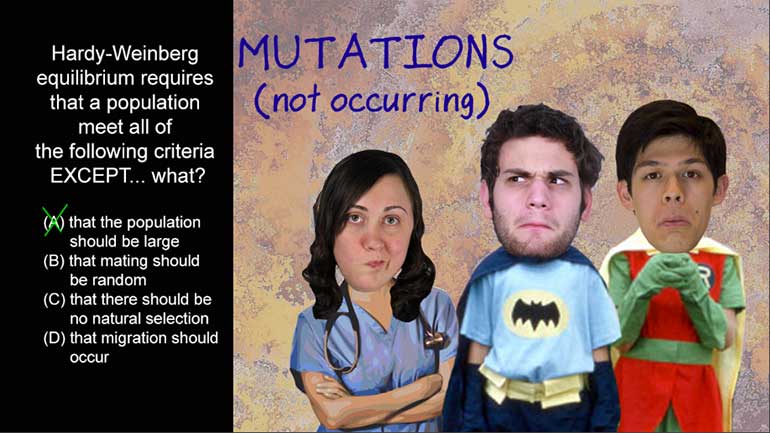ShmoopTube
Where Monty Python meets your 10th grade teacher.
Search Thousands of Shmoop Videos
AP Biology 1.1 Essential Life Process Information 624 Views
Share It!
Description:
AP Biology: Essential Life Process Information Drill 1, Problem 1. If one parent is heterozygous for the sickle cell trait while the other parent does not carry it, what is the likelihood that their child will be a carrier?
Transcript
- 00:03
Here's your shmoop du jour, brought to you by sickle cells.
- 00:07
If they're that sickle, they really should be at home in bed.
- 00:13
If one parent is heterozygous for the sickle cell trait while the other parent does not
- 00:19
carry it, what is the likelihood that their child will be a carrier?
- 00:24
And here are the potential answers...
Full Transcript
- 00:28
All right, this is a pretty straightforward question... if we know what heterozygous means.
- 00:32
If we don't... we can always eeny-meeny-miney-moe the answer...
- 00:39
Let's assign S to represent a normal phenotype and s to represent a sickle cell phenotype:
- 00:49
In genetics, heterozygous means you have one of the dominant S, and also an abnormal, recessive
- 00:56
lowercase s.
- 00:57
This means that one parent has the genotype of big S, big S, and one has the genotype
- 01:03
big S, small S.
- 01:05
If we write out a Punnett Square to represent the possible genetic combinations for the child...
- 01:12
...we'll see that there is a 50% chance of the child being a carrier.
- 01:19
So...our answer's C!
- 01:21
Don't worry -- just because both your parents have a big S doesn't mean that you're going to have a... big S.
- 01:27
No Punnett Square intended.
Up Next
AP Biology: Biological System Interactions Drill 1, Problem 1. Complete the sentence about a saturated fatty acid.
Related Videos
AP Biology: Evolution Drives the Diversity and Unity of Life Drill 1, Problem 1. The first cells on planet Earth were likely what?
AP Biology: Free Energy and Molecular Building Blocks Drill 1, Problem 1. Which statement incorrectly describes the properties of water?
AP® Biology: Evolution Drives the Diversity and Unity of Life Drill 1, Problem 2. What was likely the first genetic material?
AP Biology: Evolution Drives the Diversity and Unity of Life Drill 1, Problem 4. Hardy-Weinberg equilibrium requires that a population meet al...




